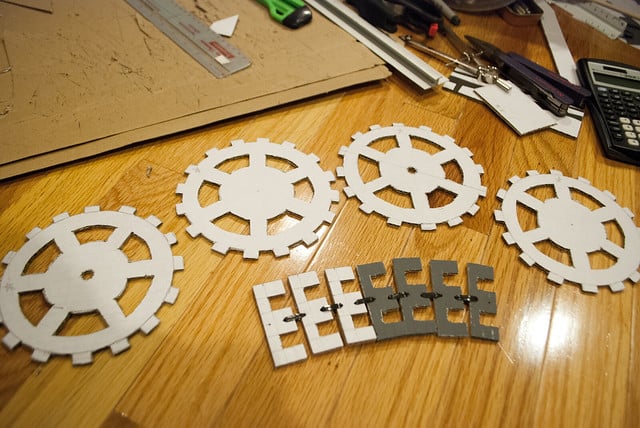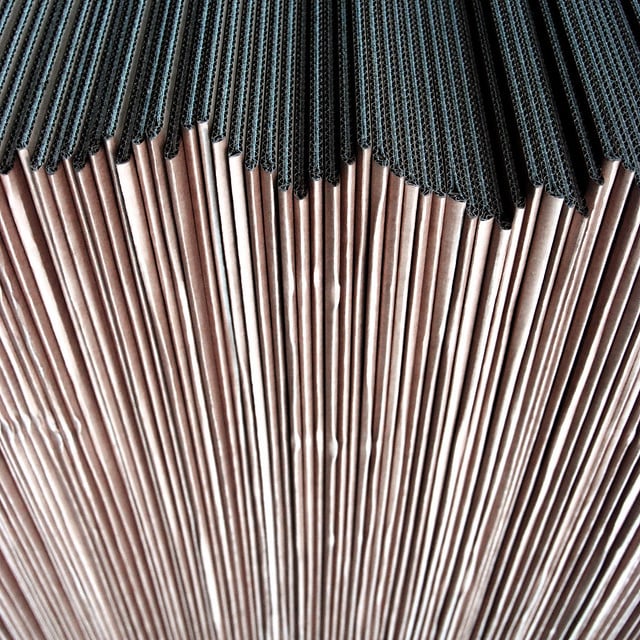When you hear “budget cosplay,” some negative connotations might come to mind. While closet cosplays are sometimes a great value for your budget, you might also think of jokesters who show up to cons in purposefully shoddy armor or beginner cosplayers that miss their potential because they didn’t know better. But the truth is that while a big budget can certainly help, good cosplay doesn’t have to cost a lot. Cheaper cosplay materials, when treated right, can still turn into incredible builds.
One of these budget cosplay materials with great potential is cardboard. Some simple cardboard or even a salvaged box can be used for some of the very same applications as materials like foam, thermoplastics, and even 3D print. In this post, we’ll discuss making cosplay from cardboard and the pros and cons you should know about working with this budget material.
Best Uses for Cardboard in Cosplay
 When it comes to cosplay, there are two main types of cardboard that can be used for two different sets of applications. On one hand, thin chipboard, like the kind of cardboard used in some packaging or on the backs of notebooks, is flexible enough for a variety of structural uses. Chipboard can be patterned and formed much like craft foam for armor, shoulder pieces, and more. It can also be used to make helmets or other structured headpieces. The advantage of the chipboard is that it’s flexible enough to bend into curves, though making a completely round piece will require careful planning and placement of the right darts to fold along.
When it comes to cosplay, there are two main types of cardboard that can be used for two different sets of applications. On one hand, thin chipboard, like the kind of cardboard used in some packaging or on the backs of notebooks, is flexible enough for a variety of structural uses. Chipboard can be patterned and formed much like craft foam for armor, shoulder pieces, and more. It can also be used to make helmets or other structured headpieces. The advantage of the chipboard is that it’s flexible enough to bend into curves, though making a completely round piece will require careful planning and placement of the right darts to fold along.
Thicker cardboard, like the type used to make shipping boxes, is a lot more difficult to bend smoothly. But, because of its relative rigidity, this kind of cardboard can be really handy for flat applications. For example, it works great for flat shields or weapon blades. You could also potentially use it for plated armor or a flatter armor piece, like a chest plate. Additionally, you can use thick cardboard as a base material to build on top of. On one hand, you could make paper mache from newsprint and glue and sculpt more sculptural armor or other pieces on top of cardboard, or you could use it as a base template to build over with something like EVA foam as something cheap to pad out the size. Finally, many cosplayers agree that if you’re going for an 8-bit look for your cosplay, cardboard can be the way to go thanks to the ease of making angles.
Both types of cardboard, however, can be ideal for customizing plain masks. Depending on the shapes you need to add, you could use thinner chipboard for curved pieces or thicker cardboard for straighter additions. Both types could also work for creating smaller details to adhere on top of other materials, like making scales or mosaic pieces to glue on top of foam armor.
Benefits of Building Cosplay from Cardboard
There are a few big benefits to working with cardboard when you can. Here are the ones you should know:

- Cardboard is cheap and easy to find. Most of the time, you can find it around your house, and you might not even need to buy any.
- If you’re concerned about the environmental impact of your cosplay, using cardboard is a great way to recycle material you already have instead of purchasing something new (though a greasy pizza box probably won’t make for the nicest suit of armor.
- Cardboard can be a great substitute for other materials if your budget is thin or if you run out of something at the last minute. In many cases, it can be used for the same types of situations as foam or thermoplastic.
- Cardboard is paintable with spray paint or acrylics.
- It’s also relatively easy to cut with scissors or a box cutter with a sharp blade.
- Cardboard can give you the option to create smoother curves as well as sharper folds in your armor.
Cardboard Challenges
However, there can also be some downsides to working with cardboard in place of something more specialized. Here’s a list of a few challenges you can expect:

- Cardboard isn’t nearly as durable as foam, thermoplastic, 3D print, metal, etc. Not only can it be damaged relatively easily, but it’s more likely to wear out or fall apart after a few wears compared to something more durable.
- While it is possible to create curved edges with cardboard, it’s not easily as easy to do as it is with foam or thermoplastic. You’ll need to have a pretty good grasp on patterning and placing darts in order to create a smooth, round curve with cardboard, unless you’re building on the surface with something like paper mache.
- Cardboard basically has one texture that’s difficult to change. You may not run into issues with smoother cardboard, but if you’re working with a corrugated piece, you might have to prime or cover the piece with another material in order to get rid of any folds or ridges.
- You’ll also likely need to prime your cardboard with something like latex primer before painting if you want your paint to last.
Cosplaying on a Budget
Making cosplay can take a big investment, depending on the types of characters and designs you choose to create. While most people cosplay as a hobby, it can be disheartening sometimes to see the creations of professional cosplayers that took a lot of money to create. But we don’t want you to feel that way. It’s important to remember that it’s not the cost of the cosplay that matters, but instead it’s about enjoying the end result as well as the process of making it. You can make great cosplay at any budget if you know how to use your materials and start with a great plan in mind. Crafting with cardboard or other inexpensive materials is just one of many ways to cut costs while still making cosplay you can be proud to show off.